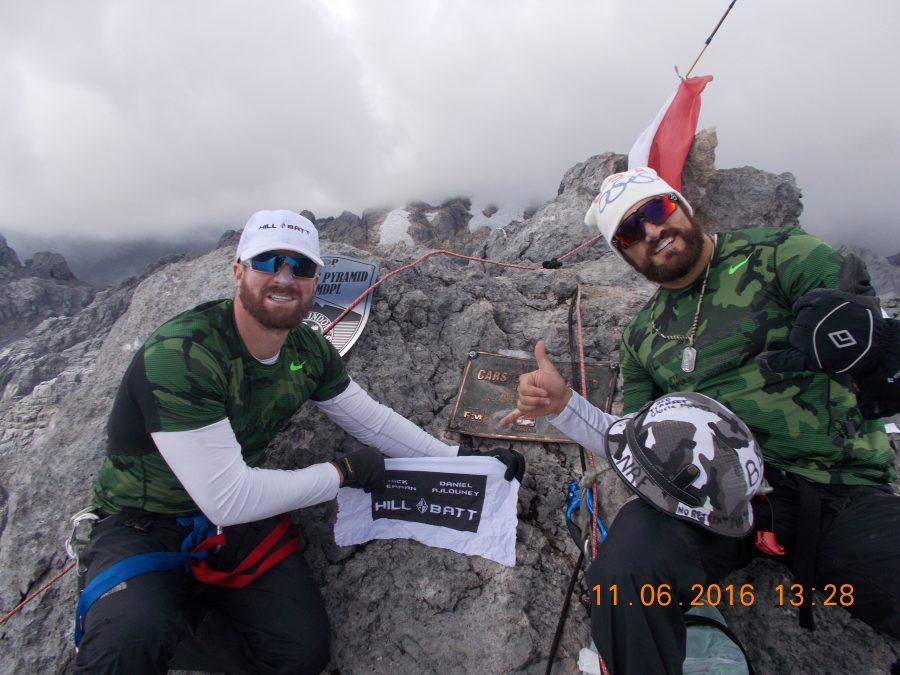Facing below freezing temperatures, days without sleep and a lack of water would be enough to scare many away from ever trying to climb some of the world’s highest summits. For UA alumnus, Drew Hillery, the thrill of the climb is everything.
Hillery graduated from the University of Alabama in 2007 with a degree in communications. Shortly after Hurricane Katrina, Hillery’s family had left New Orleans, leaving him feeling “displaced” and looking for something new to try.
“When you’re 19-20 years old, dreaming of some other things that maybe you can accomplish and since that hurricane washed us out, we started thinking of things a bit differently,” Hillery said.
Brendan Batt, a veterinarian in Louisiana, is Hillery’s climbing partner. Throughout the years, the two have climbed peaks such as Mount Rainier in Washington and Denali in Alaska.
Their latest climb was in Indonesia on Cartensz Pyramid. What the two didn’t plan for were dangers outside of their control.
“To get to the mine, we got in a bulletproof military car and rebels actually attacked when we were going there,” Hillery said. “They put us in a safe house, which was just a really weird situation because we had no proof that these guys weren’t gonna chop our heads off or call our parents and ask for money.”
After days of staying in a safe house, the team was released and allowed to proceed up the mountain. Leaving around 1am, the two began the climb with their guides leading the way as they attempted to beat the US world record for the fastest climb up the mountain.
By around 11:30, the team had completely run out of water. As they kept going further up the mountain, they noticed a serious problem facing their guides.
“Neither one of them were responsive,” Batt said. “They were both very lethargic and it was clear to Hillery and I that they had altitude sickness.”
The bad conditions persisted as they climbed, and shortly after reaching a 30-meter rock climbing portion of the mountain, one of the guides fell, hitting the ice below. Hillary and Batt were then faced with a moral dilemma.
“I huddled with Brendan and was just like ‘Dude, it’s gonna be dark in about two hours. We’re in the middle of nowhere and it’s icy and bad conditions. Do we save the guy’s life or do we go back down,’” Hillery said. “We decided that the only real choice was to do our best to get him down to safety.”
Hillery and Batt attached the guides to their lines and attempted to find ways to keep themselves and their guides hydrated. During the journey up, Hillery discovered a tarp that was later used to ensure that the team had water.
Though their guides were facing altitude sickness, Hillery and Batt continued up the mountain, eventually reaching the summit.
“It’s kinda like an eerie, really spiritual spot when you get up there,” Batt said. “There’s no one else on the whole mountain range, and everyone is just real quiet.”
After getting to a safer altitude, the guides were able to trek down the mountain to get a still-recovering assistant to safety, leaving Hillery and Batt behind.
To avoid the dangers of the below freezing temperatures, the two huddled close and shared what little gear they had remaining to endure the intense snow.
“Those past experiences definitely help when you come into an encounter like this,” Batt said. “Just having calm nerves during an experience like that and trying not to panic.”
After climbing the summit and surviving a treacherous journey down with unresponsive guides, the team returned to their host home, ready to rest. The two spent the next few days in Australia celebrating their climb by having drinks and surfing.
Despite the dangers of the climb, Hillery and Batt are already planning their next adventure in 2018 – Mount Vinson in Antarctica.
“I’ll keep training and keep trying to keep my mind and body as sharp as possible, so when I do get in a situation like that again, I’ll prevail,” Hillery said.









